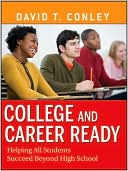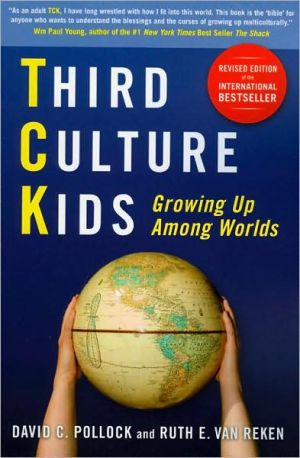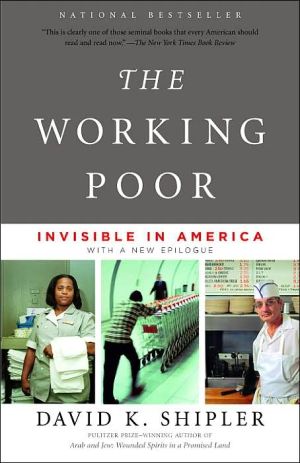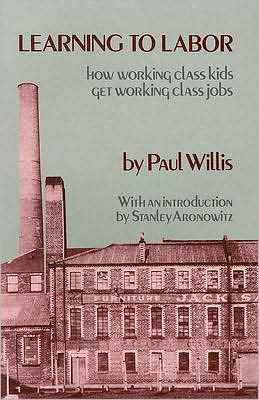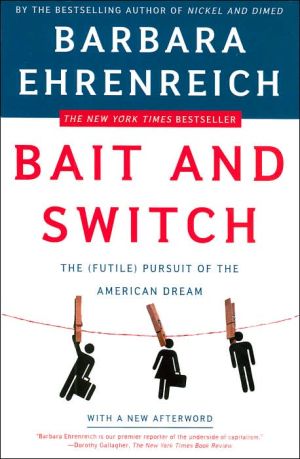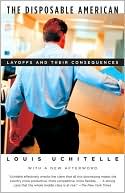College and Career Ready: Helping All Students Succeed Beyond High School
Search in google:
College and career readiness for all students is an idea whose time has come. Across the nation, increasing numbers of high schools are working to prepare more students to pursue learning beyond high school—whether or not they go to college. This marks a dramatic shift from the old view that college and vocational preparation were two separate tracks and that formal learning had an endpoint. Now it's clear that whether entering college or a vocational position, all students need to be prepared with new skills and knowledge that adequately prepare them for the challenges they will face in today's complex and competitive academic and workplace environments.College and Career Ready offers educators and policymakers a better understanding of the rationale and methods necessary to redesign high schools so that they focus on both college and career readiness. In addition, it contains a variety of practical methods by which high school faculty can adapt their programs of instruction in the direction of enhanced college/career readiness and thereby meet the needs of all their students. This includes helping students develop the cognitive strategies and content knowledge they will need to succeed. The book also considers the impact of key behaviors necessary foracademic success—such as time management and study habits. Numerous case examples highlight practices in schools that are doing these things well. Step by step, David T. Conley—an expert in the field of educational policy—presents detailed, practical evidence and strategic guidelines high schools can use as a framework for improving alignment with postsecondary success. By putting in place recommendations outlined in College and Career Ready, schools will be providing students the tools they need to succeed in college, work, and life.
ACKNOWLEDGEMENTS. PREFACE. INTRODUCTION. Should and can today's high schools prepare all students for college and careers? College ready and work ready: One and the same? The new challenge. What we mean by “ready for college and careers”. PART I: REDEFINING COLLEGE AND CAREER READINESS. CHAPTER 1: THE FOUR KEY DIMENSIONS OF COLLEGE AND CAREER READINESS. General elements of a more comprehensive definition of college and career readiness. Uses of the expanded definition of college and career readiness. Current means to determine college and career readiness. Course titles and grade point averages. Performance in college courses. Remedial education. General education requirements for a baccalaureate degree. Details and examples of the four dimensions of college and career readiness. Key cognitive strategies. Key content knowledge. Academic behaviors (self-management). Contextual skills and awareness (college knowledge). Differences between high school and college courses. Examples of what college courses expect. Operational examples of college readiness. General characteristics. Example performances. CHAPTER 2: WAYS TO DEVELOP KEY COGNITIVE STRATEGIES AND KEY CONTENT KNOWLEDGE. Formative assessment for college readiness. Developing key content knowledge. Big ideas. Aligning courses and expectations between high school and college. Aligning with AP or IB. Aligned syllabi and reference courses. Senior seminars. Senior assignments. Paired courses. The role of scaffolding. CHAPTER 3: WAYS TO DEVELOP ACADEMIC BEHAVIORS AND CONTEXTUAL SKILLS AND AWARENESS. Self management. Time management. Study skills. Goal setting. Persistence with difficult tasks. Self-awareness of academic strengths and weaknesses. Contextual skills and awareness (college knowledge). Building cultural capital. Helping navigate admissions. College partnerships. Supporting postsecondary participation. CHAPTER 4: KEY PRINCIPLES OF COLLEGE AND CAREER READINESS. Principle 1: Create and maintain a college-going culture in the school. Examples of how schools seek to create college-going cultures. Principle 2: Create a core academic program that is aligned with and leads to college readiness by the end of 12th grade. Examples of how schools seek to develop aligned core academic programs. Principle 3: Teach key self-management skills and academic behavior and expect students to use them. Examples of how schools develop academic behaviors. Principle 4: Make college and careers real by helping students manage the complexity of preparing for and applying to postsecondary education. Examples of how schools help students manage the complexity of preparing for college. Principle 5: Create assignments and grading policies that more closely approximate college expectations each successive year of high school. Examples of how schools seek to create assignments and expectations that more closely approximate college. Principle 6: Make the senior year meaningful and appropriately challenging. Examples of how schools seek to make the senior year meaningful. Principle 7: Build partnerships with and connections to postsecondary programs and institutions. Examples of how schools build postsecondary partnerships. CHAPTER 5: CASE STUDIES OF SCHOOLS THAT SUCCEED. Alternative School: University Park Campus School, Worcester, Massachusetts. University Park: Proving that demographics are not destiny State and local context. How it all began: Clark University's “enlightened self-interest”. The Academic program: Closing the gaps and getting students college-ready. Capitalizing on substantive ties with higher education institutions. The school culture: No one is allowed to fail and everyone is a learner. Magnet School: Fenway High School, Boston, Massachusetts State and local context. Small learning communities facilitate the development of college-and life-readiness behaviors and skills. A challenging core curriculum provides opportunities for all students to become college ready. Collaboration with a local community college and community partners provides transitional learning opportunities. Comprehensive High School: Cherry Creek High School, Greenwood Village, Colorado. State and local context. School culture revolves around college preparation from day one. Key cognitive strategies and academic behaviors are emphasized. The school campus resembles a college. Administrators set a tone of professionalism and evaluation. Counselors provide continuity and contextual skills. Charter School: Minnesota New Country School, Henderson, Minnesota State and local context. Project-based learning helps students become ready for life after high school. Integration of technology prepares students for 21st Century living and learning. Advisory groups facilitate students’ learning and development. Students develop a strong sense of responsibility. Early College High School: Manhattan Hunter Science High School, New York, New York. State and local context. A rigorous college preparatory curriculum facilitates a successful transition into higher education. Unique academic support programs promote student achievement. Intensive guidance counseling practices build contextual skills and awareness. Students develop a sense of responsibility for their learning. Comprehensive High School: Garland High School, Garland, Texas State and local context. The school focuses on key cognitive strategies and college content Latino ELL students are encouraged to attend college. Teachers collaborate to align curriculum vertically. Academic behaviors and contextual skills are emphasized. Magnet School: POLYTECH High School, Woodside, Delaware State and local context. The Polytech curriculum and academy structure integrates the academic and the technical. Even with a strong technical program, the school maintains a focus on college preparation. PASS program provides systemic support. Staff communication leads to articulation of standards. Private School: Cristo Rey Jesuit High School, Chicago, Illinois State and local context. Corporate Internship Program builds community connections and contextual skills. Bilingual students and staff enhance culture and parental involvement. Curriculum and assessments are designed collaboratively. Personalized college counseling supports college readiness. Homework center cultivates academic behaviors. CHAPTER 6: PUTTING IT ALL TOGETHER. Develop a profile of the school’s college readiness capacity. Identify outcome measures of success. Assess the district capacity to support improvements. Institute specific programs to address all four dimensions of college and career readiness. Make small incremental changes. Make larger systemic changes. Engage outside partners. Institute professional development to support college readiness. Help teachers strengthen content knowledge, instructional. strategies, and awareness of college knowledge. Utilize the power of professional learning communities. Recognize the importance of culture and change culture. Changing behaviors to change beliefs. Symbolic changes. Gauge progress of changes in the high school. What are the effects on student performance in college? PART II: STEPS ON THE ROAD TO READINESS. CHAPTER 7: STEPS HIGH SCHOOLS ARE TAKING TO MAKE MORE STUDENTS COLLEGE AND CAREER READY. Small schools and high school conversions. Career academies. Advanced Placement and International Baccalaureate Programs. Early college high schools. Dual enrollment. Learning from the new models. CHAPTER 8: STEPS STATES ARE TAKING TO MAKE MORE STUDENTS COLLEGE AND CAREER READY. State actions to date. Examples of state actions. Efforts to increase the value of state high school exams and of the high school diploma. State efforts to align high school and college. State college readiness standards: The example of Texas. Organization of the Texas College Readiness Standards. Structure of the Texas College Readiness Standards. English as a way of knowing. Mathematics as a way of knowing. Cross-disciplinary skills: Foundations of learning and knowing. Clear messages states can send to the secondary system. Focus high schools more clearly on college readiness. Develop and utilize more comprehensive measures of student readiness. Pay attention to the needs of first-generation college attendees. Commit to ensuring teachers have necessary content knowledge and instructional skills. Clear messages states can send to their postsecondary systems. Align exit-level high school courses and entry-level college courses better. Control the quality of entry-level courses. Utilize better diagnostic information for placement. Create integrated student support programs. Ensure future educators have the skills to make all students college ready. CONCLUDING OBSERVATIONS. APPENDIX A: CHARACTERISTICS OF THE 38 STUDY HIGH SCHOOLS. APPENDIX B: EXAMPLE OF C-PAS TASK IN ENGLISH, MATH, AND SCIENCE. APPENDIX C: EXAMPLE OF ITEMS FROM SCHOOL DIAGNOSTIC. APPENDIX D: RESOURCE LIST. APPENDIX E: COLLEGE AND CAREER READINESS SERVICES AND TOOLS AVAILABLE THROUGH EPIC. Index.
